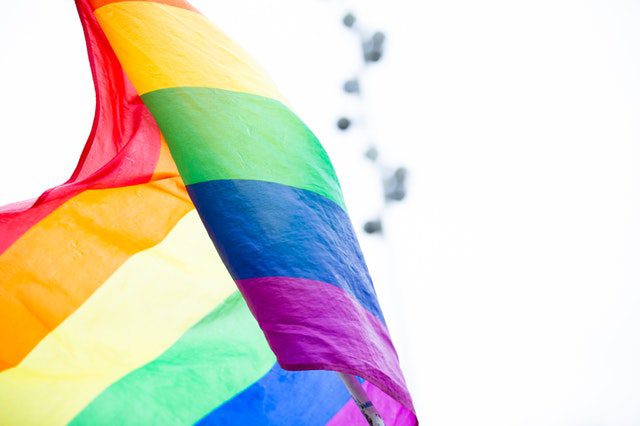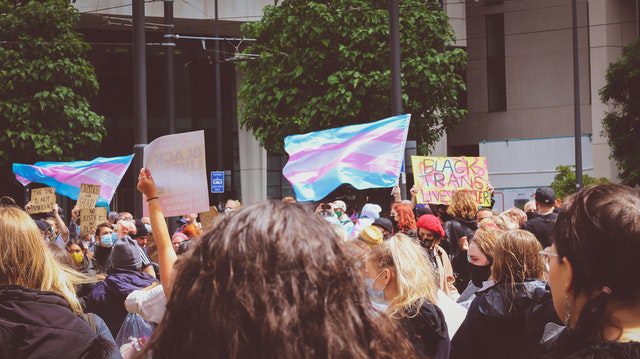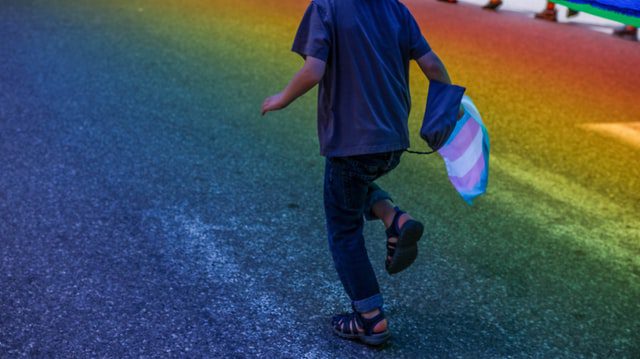
TRANSGENDER PRIDE FLAG
Flags are and have always been an important part of the LGBTQI+ community. Sometimes, people fly a flag in protest to show support, and other times to celebrate their identities at a gay pride parade, or simply as a casual decoration. They represent and celebrate the identity of people, and they are constantly evolving and changing. While the rainbow pride flag was created to represent gay pride and be all-inclusive, each of the different pride flags that have been designed since representing a specific section of the LGBTIQ+ community.

History
The original gay pride rainbow flag was created for the first time in 1978, by Gilbert Baker. Since then it has become an iconic symbol of gay pride and is used all over the world.
The original gay pride flag had eight stripes in different colors, hence why it is often simply referred to as the rainbow flag. Each of the eight rainbow colors, as with any pride flag, represents something different. The first stripe was hot pink and symbolized sex, the second stripe was red to represent healing. Below that was a yellow stripe meant to embody the sun, a green stripe meaning nature and the beauty found within it, and a turquoise stripe to represent the arts. The last two rainbow stripes were indigo blue as a symbol of harmony, and a violet stripe as a symbol of spirit.
Since then, the rainbow flag has undergone some changes. It was reduced to six colors, which are perhaps the rainbow flags most often seen today. The first hot pink stripe no longer features in the gay pride flag, and the turquoise and indigo stripes have been combined to make a royal blue stripe.
More recently, Daniel Quasar created a reboot of this gay pride rainbow flag, for the sake of promoting representation and inclusivity in the LGBTIQ+ community. More specifically, Quasar wanted a flag that represented especially the most marginalized communities in the LGBTIQ+; namely queer people of color and people who identify as transgender. On top of the original rainbow flag design, Quasar included a triangle with black and brown stripes – to represent people of color – and a triangle containing the colors of the transgender pride flag.

The Trans Pride Flag
The flag we accept as the Transgender Pride Flag today was originally created by Monica Helms in 1999. Monica is an American citizen and transgender woman, a transgender advocate, and a US Navy veteran.
The flag was originally created by Helms after a conversation with Michael Page, who created the Bisexual pride flag, in which he encouraged her to create a flag of her own. Helms didn’t create the flag with the intention for it to become recognized as the official flag and took it with her to a pride parade in Phoenix, Arizona, in 2000. However, people were so interested in the flag and liked it so much, it was soon adopted and used by transgender people and supporters all over the country. Since then, it has been accepted as the official Transgender Pride Flag.
Monica Helms was assigned male at birth and grew up male in Arizona. One of her earliest memories, she recalls, is praying to God to be turned into a girl for the first time at the age of five. It would be 41 years before her wish came true. Since transitioning, Helms has been advocating for and supporting trans people all over the world. Alongside her wife, Darlene, she became one of the allies for others in the transgender community.
In 2014, the Smithsonian National Museum of American History accepted Helms’ original flag to celebrate the anniversary of the day it was made. Since then, people on social media have begun circulating the 19th of August as Transgender Pride Flag Day. The flag is currently still exhibited on-site in the Smithsonian.

Meaning
The meaning behind this pentacolor trans pride flag is a representation of members of the transgender community. Not to be confused with the genderqueer flag, which consists of three lines in the colors green, white and purple, the transgender pride flag is made up of five stripes, arranged horizontally: two pastel blue stripes at the outer edges, two pastel pink stripes, and one white stripe in the middle of the flag.
The light blue stripes are meant to represent the color used traditionally for baby boys, and the light pink stripes represent the color used traditionally for baby girls. Interestingly, these colors weren’t always used in that way. Colors first began being used to represent gender in the mid- to late-19th century, and then it was the other way around- blue was the traditional color for girls, and pink was the traditional color for boys.
The white stripe in the center of the flag is meant to represent people who identify as intersex, gender-neutral, transitioning, non-binary, or have neutral or undefined gender identities.
Helms has also stated that the flag is symmetrical on purpose, so that no matter which way someone is flying it, it remains correct. This is to signify the journey in which people search for and find whatever feels right to them as a person.
An updated version of the iconic LGBTIQ+ rainbow pride flag design now includes a triangle containing the pink, white and blue of the transgender pride flag, alongside a brown line for LGBTIQ+ people of color, to promote inclusivity even further.




